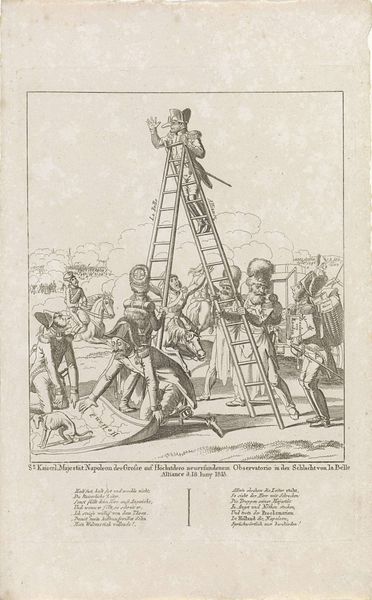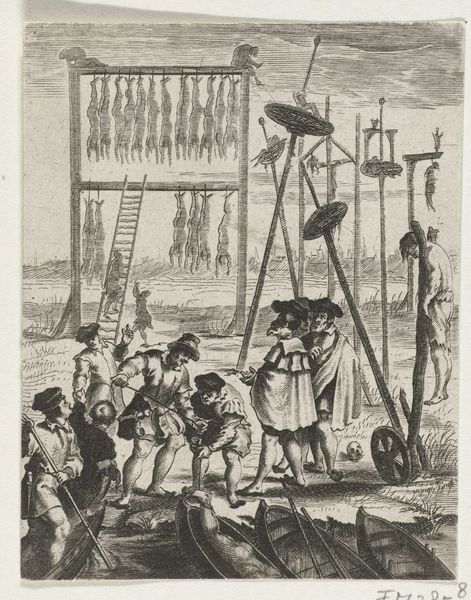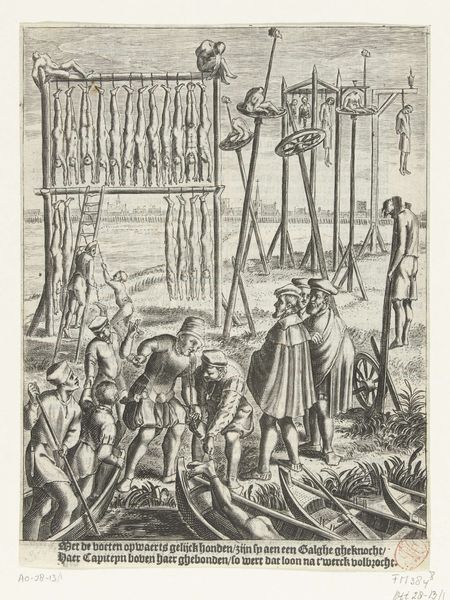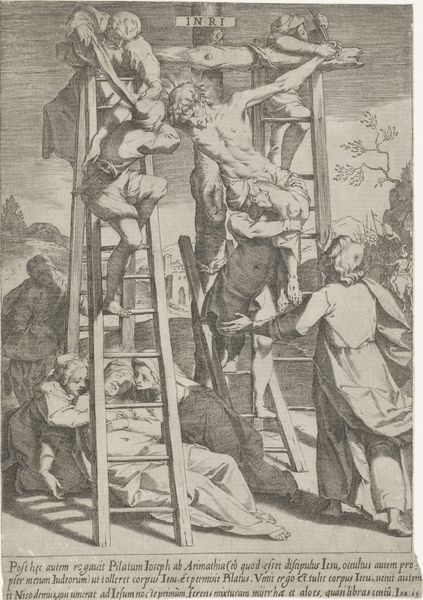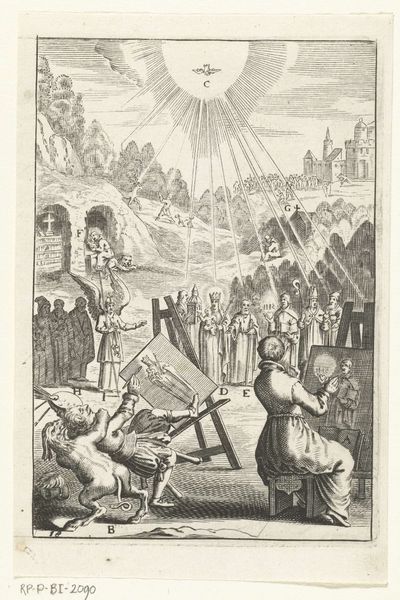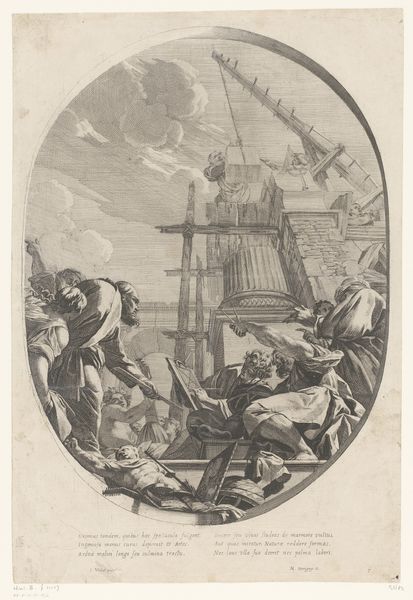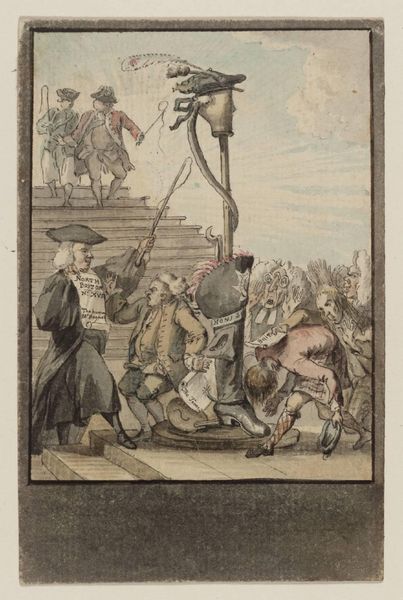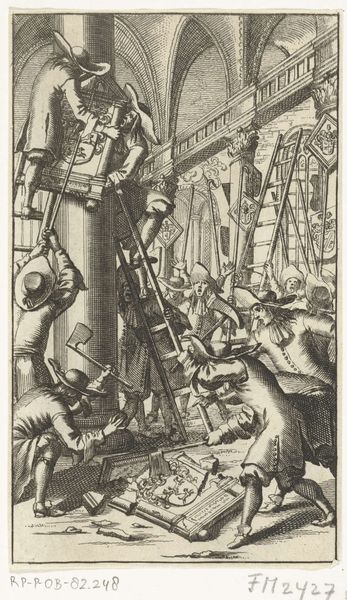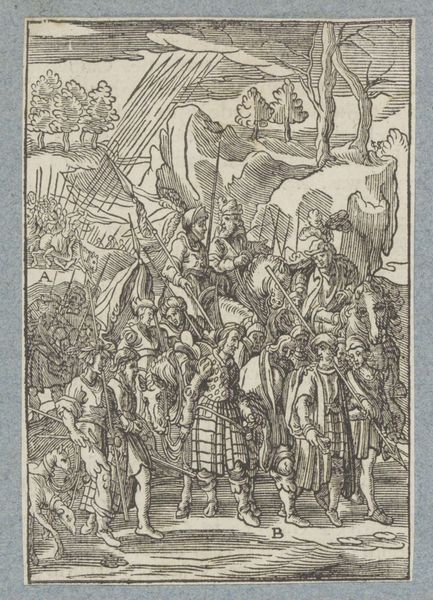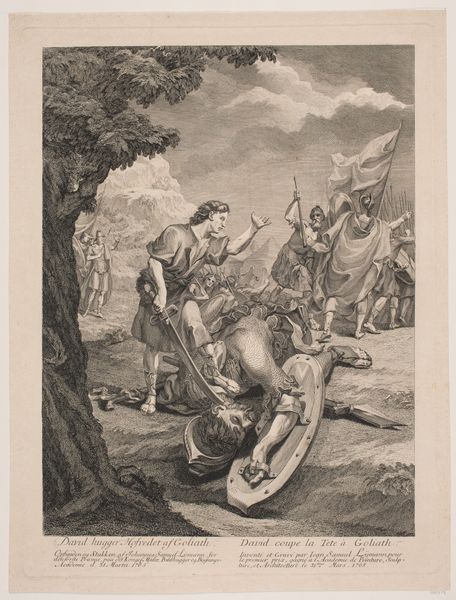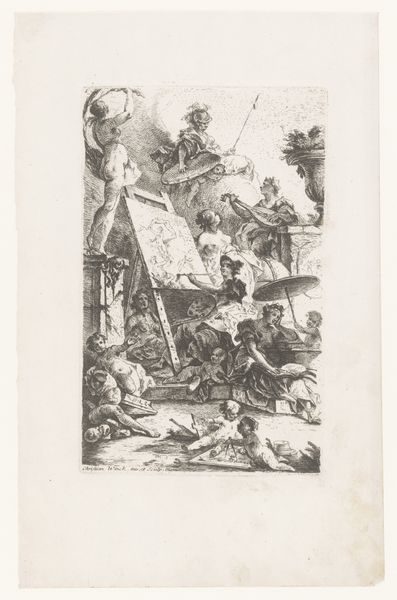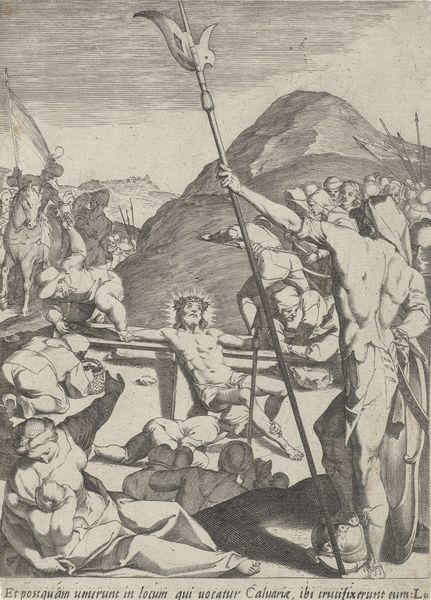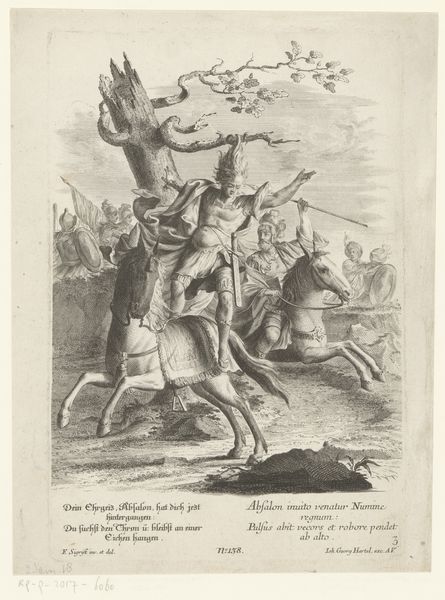
Saint Andrew kneeling and adoring the cross 1750 - 1780
0:00
0:00
Dimensions: Sheet (Trimmed): 15 1/4 in. × 11 in. (38.8 × 27.9 cm)
Copyright: Public Domain
Curator: Look at the scene before us. This print, made by Carlo Faucci between 1750 and 1780, depicts "Saint Andrew Kneeling and Adoring the Cross." It's currently housed at the Metropolitan Museum of Art. Editor: The most striking thing is the rawness. Despite the formality implied by the religious subject matter, the laborers wrestling with that rough-hewn cross practically burst from the engraving. I am immediately drawn to the sweat and effort in raising a very heavy and large object that will lead to the Saint's martyrdom. Curator: Absolutely. Note how the artist leverages the X-shaped cross. Beyond its obvious connection to Saint Andrew, think about how that form dominates the composition, symbolizing burden, but also directionality. Editor: Engraving as a process feels crucial here. Think about the labor, physically impressing these tiny lines, toiling over the plate to reproduce an image. It echoes the hard work involved in physically erecting this rough structure for Saint Andrew's execution. Also the prints are a product made for sale: the production, dissemination, and commodification of this image and tragic moment becomes clear. Curator: That labor extends further. It references a powerful cultural memory associated with the early Church. We’re not just witnessing a scene but engaging with the symbol of the cross, carrying with it the entire narrative of salvation. Notice how Faucci positions Saint Andrew, in a moment of deep spiritual connection. The upward gaze, a plea or expression of devotion, it invites us to look beyond the material. Editor: But isn’t that connection itself also material? The kneeling, the physical exertion, the sheer weight of the wood and how it becomes this site for both spiritual connection and terrible violence. It's also an industry: one where men like the men portrayed exert force and skills that earn wages and produce artifacts for symbolic or monetary value. Curator: I concede your point on how this image ties the viewer directly into history. Now, what can we derive from Carlo Faucci reproducing the artwork in this way? By reproducing this imagery, perhaps he is connecting with Carlo Dolci, from whom the picture comes, thus carrying this art tradition forward to modern day. Editor: By digging into the printmaking itself, and connecting the Saint Andrew picture to broader socio-economic factors of image production and dissemination, it seems possible that something holy like that could be treated, transformed, traded. A true look at how meaning comes to exist. Curator: Food for thought! Thanks for this productive exercise into Saint Andrew's final hours, one which may reveal a much larger discussion in image making and art creation overall.
Comments
No comments
Be the first to comment and join the conversation on the ultimate creative platform.

